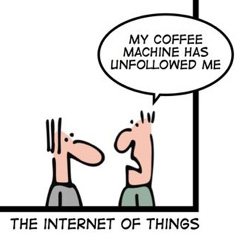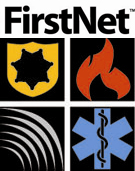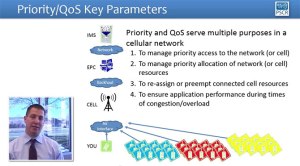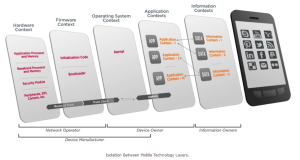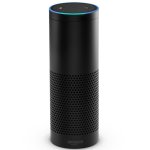
FirstNet and OneNet
As the Washington State Point of Contact (SPOC) for the First Responder Network Authority (FirstNet) my team and I from the state capital, Olympia, visit first responders around Washington to inform them about and involve them with developing plans for the nationwide public safety wireless network.
As you might guess, “suits” from the distant state capital are often greeted with skepticism, especially when they arrive to talk about a federal government program.
FirstNet was created by Congress in 2012 and funded with $7 billion to construct a wireless network for responders, allowing them to securely use apps, smartphones and other mobile devices to protect the public safety.
Tuesday, November 24, 2015, we visited Okanogan County and the Colville Indian Tribes. We spent several hours with sheriffs’ deputies, firefighters, emergency managers, mayors, tribal members and civilians from four counties and the tribal reservation.
We got an earful.
The Okanogan country has been through hell.

Okanogan Wild Fire
Two years running this area has seen successively larger wild fires. They are the largest in the recorded history of Washington. Hundreds of residents lost their homes. Hundreds of people barely escaped with their lives.
Three firefighters lost their lives. Radio communications were partly to blame.
The Okanogan country is rugged. There are few towers for the land mobile radio networks used by deputies, police, firefighters, paramedics and utilities. Fewer towers still for cellular services. Most towns and areas, if they have cell service, have a single tower providing that service, with multiple carriers using it. Backhaul (connection to the Internet) for these towers is often a single fiber optic cable line, or a single microwave link.
Fire burns through fiber optic cable, particularly if it is carried on poles. In both of the last two years fiber melted in these fires knocked out 911 service to large parts of these counties, and terminated service on cell towers. Heroic efforts by some of commercial cellular companies re-established service but often areas were without service for weeks. At one point the entire government of the town of Pateros operated with just one cell phone for communications for several days.
Responders here, like those throughout the state, are skeptical of FirstNet. Their story is illustrative of the problems FirstNet must solve in order to be successful in the 95% of the nation’s geography which is rural, remote or isolated.
The first problem is simply coverage. Most towns have cell phone and wireless data service, and sometimes service from multiple commercial carriers. But vast tracts of land have no service, or only service if a resident drives down the road a piece. Many people move to these areas for the remoteness, for the beauty, for the isolation. And, with lack of Internet or cell service, that’s exactly what they get.
Coverage affects public safety. In many cases during these wildfires, deputies and police officers and firefighters drove from door-to-door to tell people to evacuate (such orders were often ignored, as explained below).
Cell coverage affects wild land firefighting. When a significant fire erupts, and an incident command post is created, it is often located on a state highway with cellular service. The highway location also allows for logistics – food and support services. Having cell service enables not just incident command, but also allows firefighters to stay in touch with their families.
Cellular phone and data coverage is important, but too often coverage is non-existent over much of these areas in the Okanogan.
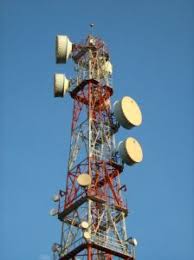
Microwave Tower
The next problem is something we call “public safety grade”. As stated above, too often multiple commercial cellular carriers all use the same tower, and it will only have battery backup or a small generator on site as backup in case of an electrical power outage. And it often has only one connection to the outside world via microwave or fiber optic cable. Wildfires melt fiber, and when electrical power fails the batteries also are drained after a few hours. Of course these failures always occur during a disaster, exacerbating communications problems.
Another problem is communications access for members of the public. For example, the entire Colville Indian Reservation – homes, businesses, tribal government buildings – has only wireless microwave links on towers for Internet access. But the tribal government uses Facebook pages for communicating with tribal members during emergencies, and that requires reliable Internet. Incidentally, most non-tribal fire departments and emergency management officials also use Facebook pages for public updates. When cell service is down, when microwave towers run out of power, communications with residents and tribal members also are eliminated.
Most other, non-tribal, communities in the Okanogan face similar challenges: single cell towers or single points of failure for connections to the Internet, and usually both.

Mayor Soo Ing-Moody
As a matter of fact, Mayor Soo Ing-Moody of Twisp, and other public officials in the region, have publicly complained that they often receive evacuation orders only from watching commercial television stations.
And FirstNet, wonderful as it might be, will be a responder network, with priority to first responders. The public is left out in the cold (or, in the case of wildfires, in the hot seat). FirstNet will provide no direct communications for the public. When their cell service fails, when the power to microwave towers serving the Colville Tribe are gone, they are “in the dark” for communications.
Finally, there is great skepticism about FirstNet phased development plans. Residents of the Okanogan are used to getting hand-me-downs. Although this area has a significant second-home population and tourist trade, commercial cellular companies always build in urban areas first. Service is the Okanogan is rarely – and slowly – improved. And that is exactly FirstNet’s present plan – build in urban areas first.
There is great skepticism about FirstNet’s promises: better coverage, public-safety-grade coverage, for equal or less cost. All while having a user base 5% the size of Verizon or AT&T (perhaps 5 million subscribers to cover the network’s costs, rather than more than 100 million users). What sort of business plan magic is this? Exactly how does that work?
Given all these challenges, local public safety and elected officials are justifiably skeptical of a federal agency, FirstNet, which comes and promises a new wireless data network for responders.
But, as always, great problems spawn great opportunity. How can FirstNet seize this opportunity to help the people living in these remote areas?
-

Mobile Cell Site
Deployables. The only real solution to improving coverage – especially in unpopulated areas subject to wild fires – is a robust deployable strategy. Deployables are cell sites which would be rapidly be set up and activated when needed. These deployables might be cell-on-wheel (COW) trucks like the commercial carriers have, or they might be cell sites carried on existing police vehicles and fire apparatus, or they might be backpackable cell sites which can be carried or driven to mountaintop locations. Perhaps there are yet-to-be-fully-developed deployable strategies like Google’s Project Loon (balloons), drone-based cell sites (although those potentially interfere with firefighting airplanes), or low-earth orbit satellites.
But people in the Okanogan are skeptical of fragile new technology which tends to fail when it is needed most. Satellite is slow and expensive. And again, who pays for all this, and maintains it? Where is it based – locally or in some distant state?
FirstNet must have a robust plan for deployables. Ideally, such a plan would include the ability for local firefighters and state agencies to rapidly pull out the equipment, set it up, and have wireless connectivity where they need it.
- Public safety grade. To be “public safety grade”, cell sites in remote areas must have at least two separate connections to the outside world, for example a fiber line and a microwave link, or two fiber lines running in separate directions. Public safety grade sites must withstand potential earthquakes or fires. Such sites must be able to operate for many days, if not weeks, disconnected from electric utilities by using generators or solar panels.
In most cases FirstNet could “beef up” existing commercial sites by adding those features, saving scarce dollars.
- Access for residents. In the law which created it, Congress expressly prohibited FirstNet from offering service to businesses or consumers. However, in a disaster when lives are at stake, such niceties as that law are ludicrous. But there are ways to stay within the law but also address the problems mentioned by Mayor Ing-Moody and the Colville Tribes for informing their residents and tribal members. Here are specific ideas:
(1) When constructing the additional backhaul links above, allow tribes and local communities to use the connections for their Internet access. For example, let’s suppose there is a cell tower with one existing microwave link to the outside world. FirstNet could add a fiber optic line to that tower, making it more resilient – public safety grade. Installing 24 fibers is only a tiny bit more expensive than installing two fibers. The additional fibers could be used by tribes and remote communities for high speed internet access for their residents and tribal members.

Sonim Phone – a Band 14 Device
(2) FirstNet spectrum in every device. FirstNet will operate on a specific set of 700 Megahertz frequencies called “Band 14”. Very few smart phones or tablet computers have Band 14 built into them today. But let’s suppose every smart phone and tablet computer sold in the United States in the future had Band 14 built in. If such a device was used by a first responder – a volunteer firefighter or search and rescue volunteer or other public safety professional – they would easily be able to use FirstNet. But in real disasters, when commercial services are down, responders and elected officials could activate band 14 in every device, thereby alerting citizens to danger or to evacuate. Indeed, in incidents like hostage-taking and school lockdowns, responders could use Band 14 to securely talk to victims and teachers to rapidly assess situations.
FirstNet holds great potential to improve public safety in the many disasters and daily incidents we face. But elected officials and responders throughout the nation are skeptical of promises without concrete plans to address the real problems faced by our communities. FirstNet, in developing its plans for each state, needs to address the concerns of these officials through innovative, realistic, strategies which make a real difference in the lives of people throughout each state.



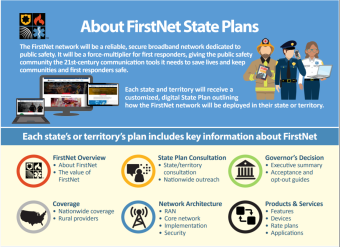
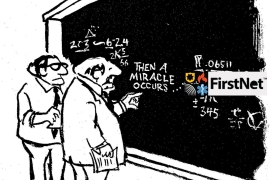 The Governor doesn’t have to commit any funds or make any commitments. No public safety agencies in a state have to use FirstNet – they are free to choose other networks. But if those agencies want priority above all other users, if they want a dedicated help desk, a customized app store, end-to-end security and all the other benefits, they can sign up with AT&T and get it.
The Governor doesn’t have to commit any funds or make any commitments. No public safety agencies in a state have to use FirstNet – they are free to choose other networks. But if those agencies want priority above all other users, if they want a dedicated help desk, a customized app store, end-to-end security and all the other benefits, they can sign up with AT&T and get it.
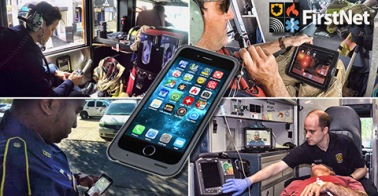

 Here are some examples of such common ground:
Here are some examples of such common ground: